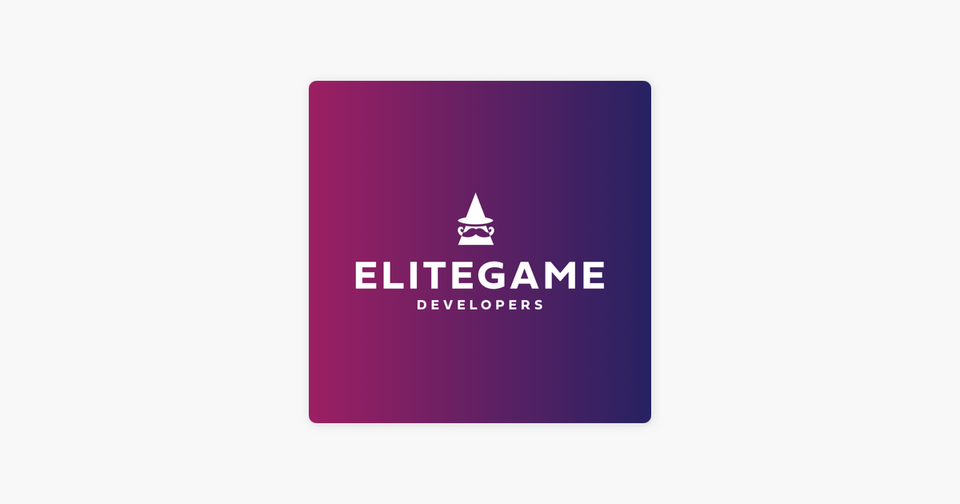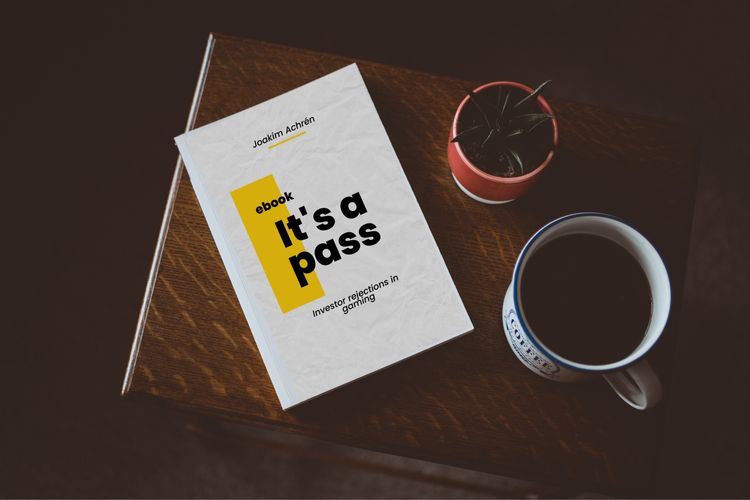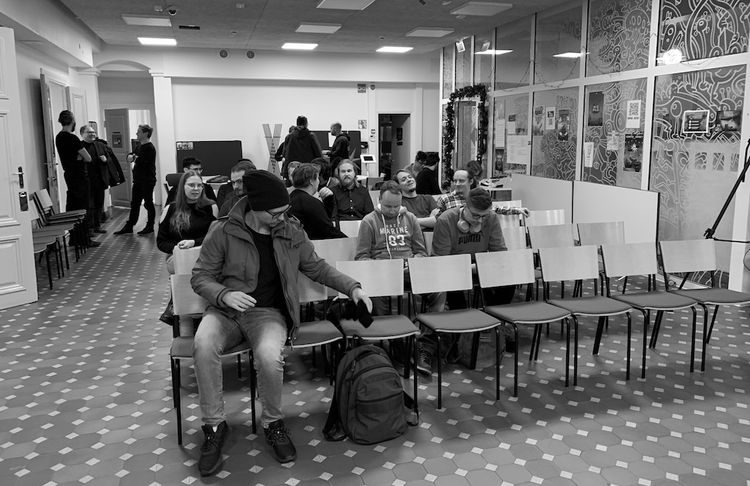EGD News #145 — Eight lessons from building EGD

Sent on July 29th, 2022.
If you aren’t a subscriber to EGD News, you can subscribe here.

My first podcast episode came out on June 4th of 2019, and the newsletter kicked off in the autumn of 2019. Here are the eight lessons I’ve learned from building Elite Game Developers for the past three years.
1. Newsletter
Newsletters are a fantastic channel, and there’s no algorithm selecting if you’re going to be exposed to the newsletter. If you are subscribed, it will land in your inbox every Friday.
I would always choose the newsletter if I needed to pick only to do the podcast or the newsletter.
We often think about podcasts and social media as the medium people subscribe to as their content source.
But when I look at the metrics on Elite Game Developers, it’s clear that the newsletter stands out as the best way to reach an audience.
I’m surprised that more companies in gaming don’t write newsletters—it’s just the most incredible way to reach people.
The open rates on my emails have been at a steady 50% for a while now. Every week, half of my subscribers open the email. As I also post the newsletter on my website, an additional 10% to 15% read the piece there.
2. Monetization
To monetize EGD, I’ve had sponsors and sold premium content like online courses and my book. Here I’ll share what has worked and the learnings from both areas of monetization.
Sponsor. Since the beginning of EGD, I’ve had a dozen different sponsors on the podcast and the newsletter. I want to share some learnings from working with sponsors.
My monthly rate for a sponsor has been roughly 2,000 euros, and it has steadily increased as EGD has grown. Half the sponsors have come through active reach outs, and the rest have reached out to me to sponsor EGD. Since EGD has grown so much in the past three years, I can now rely on sponsors reaching out to me.
Many sponsors were expecting an increase in sales, which never happened. Also, many are keen to sponsor the podcast, whereas I’ve seen the newsletter be much more effective. Since the newsletter has an open rate of 50%, it can deliver hundreds of clicks on links. As I see it, newsletters beat podcasts at sponsorship performance by a significant margin.
Teaching online. I started by writing my book in 2019, which came out in 2020. The book has sold over 2,500 copies and continues to make several hundred euros monthly.
But the primary revenue source on the premium content side has been online courses. In 2020, I launched Pitch Your Games Company, a course with several hours of video lectures on pitching to investors, including three 30min calls with me. In the last two years, I’ve sold nearly fifty of these at roughly 500 euros each.
Then I launched Gaming Angel Fellowship, an angel investing course at the end of 2020. It also contains lecture videos and an angel community Slack channel. I’ve sold about sixty of these at about 100 euros each.
The primary learning for me from teaching online is that when you have a smaller audience, the more “live” content is better since you can charge a higher price and still get enough sales to make it work. Now that EGD has grown substantially, I’ve started to experiment with online courses which would contain lots of video material but wouldn’t include a live component.
When working on EGD, I feel the most impact will come from focusing on my writing instead of coaching individual founders. Stripping the live content from my courses makes economic sense even though the price tag will be smaller since the audience size is sufficient for more sales to happen.
3. Growth
Here are my key learning from growing EGD from zero to 6,000 email subscribers in three years.
First, it would be hard if I wouldn’t want to share everything from a very personal, reflective point of view. I think I’ve reached a particular audience by opening up about my gaming experiences. I’ve genuinely wanted to share everything about the mistakes and failures in my career and what I’ve learned from them. I think that has resonated well with the audience and substantially helped grow the audience for EGD.
Second, I did spend a lot of time in 2019 looking at how people had been successful at building large newsletter subscriber audiences. One key to their growth had been to create lead magnets, which are giveaways for new subscribers, in exchange for their email addresses. If you look at EGD’s templates section, half of the items there act as lead magnets; when you obtain the template, you will be subscribing to my newsletter. Granted, people can then unsubscribe, but I would say that only a quarter of the people who pick up a lead magnet end up unsubscribing. When I look at the numbers, roughly 1/3 of my newsletter subscribers have joined because of a lead magnet.
4. Persistence amongst insecurity
Nowadays, my newsletter is growing at a pace of adding, on average, sixty new subscribers a week. I remember in early 2020, that wasn’t the case. Maybe four new subscribers would join in a week.
I knew that what I was writing was important, and there was an audience for gaming entrepreneurship lessons. If I keep creating content, more people will appreciate the content once they hear about what I’m doing.
Here are a few things that helped with the insecurity:
Learn from others. There are many online resources and communities where people share ideas on how to grow an online presence. I’ve learned much from others, including Pat Flynn, Josh Spector, and many others.
Try things out. I did a lot of webinars in 2020 and 2021, where I’d bring on people to talk about a topic. And everyone who signed up for the webinar was also added to my mailing list. On average, I was getting about seventy participants to sign up. That was a fantastic way to grow a small newsletter. But I didn’t know it would work; I just had to experiment to see if it would, and it did.
5. Start with why
I think this Tweet captures how I see my work:
I’m a big fan of Simon Sinek’s Start With Why concept, which talks about companies focusing on their reason to exist and utilizing that reason as the motivator for everything they do or create.
Let me give an example of what this meant:
In 2020 and 2021, I did a lot of webinars. Those were great for bringing out current issues and topics, but it didn’t feel like the “news” and “headlines” was what Elite Game Developers was meant to be about.
The focus has shifted 100% to evergreen material. I believe that evergreen is the best way to live the Start with Why.
6. Embrace the other writers and podcasters
In 2018, there were practically podcasts or newsletters devoted to working in the games industry. We had bloggers writing deconstruction articles on games. GDC Vault was the prime source for knowledge on game industry work.
Now in 2022, we have dozens of podcasters and writers covering different gaming aspects: leadership, diversity, news, crypto, game design and liveops, etc.
I believe that the more creators we have, creating content, we can push the industry forward by sharing ideas, personal ones and sometimes difficult ones. Elite Game Developers has been featured in several podcasts and online writings in the previous years, and I believe that all the creators can together grow their subscriber, viewer, and listener bases.
7. Less is more
In the past, I thought that a lengthy newsletter with several topics would be the correct format so that I could contain something for everybody.
As I’ve posted almost 150 weekly newsletters and podcast episodes, I’ve realized there’s so much more worth in focusing on the essentials.
Some examples:
- I can have fewer questions in a podcast episode like six is fine. And an episode doesn’t need to last 60 minutes, but we can cover the essentials in 30 minutes.
- With the newsletter, I’m shrank the content. I’ve gone from 2,000-word pieces to only 1,000 to 1,500 words. When I did this change, I saw that open rates for the newsletter email went from 42%-44% to a steady 50%.
8. Experimentation pays off
I love doing experiments, and they often lead to permanent changes to how Elite Game Developers works.
- Fewer words on newsletter, shorter podcast episodes
- The podcast is taking a break for the summer. I might as well do the same for the newsletter at some point.
- I believe that some of my audience is getting overwhelmed by the weekly cadence. I think 700-word pieces would probably be much better for any weekly newsletter.
I’ve been thinking about dropping everything else away from the newsletter. Only have the main piece, then mention the sponsor and highlight the week’s podcast episode.
One final lesson
I’ll add one final lesson. I get a lot of great feedback and praise on the content I’m writing, making me feel like it’s the best job I’ve ever had. Thank you for being a part of the EGD community.
Quote that I’ve been thinking about
If you think the price of winning is too high, wait till you get the bill from regret.
— Tim Grover
Sponsored by ZEBEDEE
By building infrastructure on top of the Bitcoin protocol, ZEBEDEE is creating interoperability between different developers and studios, allowing the entire games industry to share the same open standard for sending and receiving value. Find out more!
Happy weekend!
The podcast will be back in September and new articles worth reading will be shared again in August! I’m at the cabin now and minimizing the amount that I look at Twitter and LinkedIn. I hope to share more interesting pieces when I’m back in the city 🙂
I hope you have a great weekend!
Joakim





